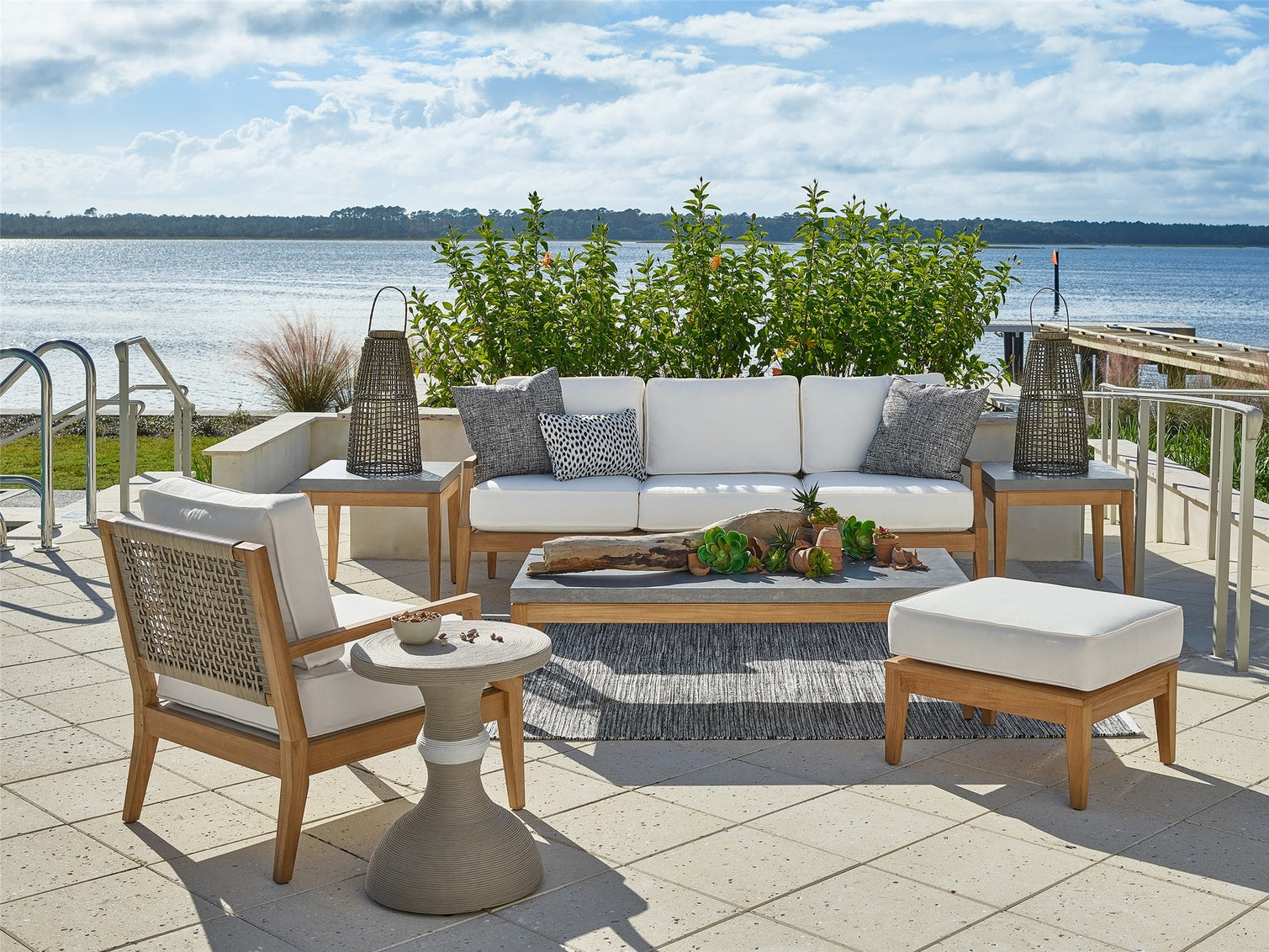Patios, decks, and other outdoor spaces naturally beckon to us, especially when the weather gets warmer. And, when properly appointed, they add to your home's living space and set the backdrop for fun and relaxation. So, when shopping for outdoor furniture, it's important to consider several factors, such as functionality, comfort, and materials, in addition to basics like cost and size. Buying outdoor furniture involves a similar process to buying indoor furniture, but the outdoor environment comes with some special considerations.
Consider Your Weather
Is your weather hot and dry, or do you live near the coast? Does it rain often? Does the midday sun beat down on your outdoor space? These are all important questions to answer before selecting outdoor furniture because outdoor exposure is hard on all furniture, no matter the climate. Hot, dry conditions can make wood splinter and crack, while frequent moisture can promote rot. Strong winds can send aluminum furniture flying; iron won't blow away but also won't stand up to salty air. The sun is perhaps the worst of all. It dulls and discolors paint, bleaches fabrics and wood, and generally degrades plastic and other synthetic materials.
To choose furniture that'll last, be realistic about the material's inherent properties. Metal is largely unaffected by sunlight, while plastic and rubber are always vulnerable to UV damage, no matter what the product's manufacturer claims. This is doubly true at high elevations. Likewise, wood furniture may come with a quality, factory-applied, weather-resistant finish, but, eventually, that finish will wear and break down, and you'll be faced with refinishing the wood or replacing the furniture. Think about how the furniture will look five, 10, and 20 years down the road.
Measure Your Outdoor Space
Consider how much space you have and how it's shaped. Is it a long and narrow balcony or a broad and wide deck? Much like furnishing a living or family room, use the area and shape of your outdoor space to determine the size of your outdoor furniture and the potential groupings it will accommodate. Most importantly, make sure to leave enough space around your furniture to walk around comfortably. Apply the same principles for traffic flow that you would use indoors.
For a small space, a bar table set may work better than a regular dining set, because bar tables are narrower, and stools take up less room than chairs. You can also take a look at cafe or bistro tables and chairs, as they have a smaller profile.
Before you head out to shop for furniture, make a quick sketch of the space, measure its dimensions, and jot them down on the drawing. Bring the drawing and a tape measure with you to the store. Unless you're spatially gifted, it's too easy to get the proportions wrong in your head and end up choosing furniture that's too small or, more likely, too big for your space.
Determine Where You'll Place the Furniture
Is your patio or outdoor space exposed to the elements, or do you have any overhead covering? Will your furniture rest on soft ground and grass or on a hard surface, such as a wooden deck or a paved patio? This helps you choose materials that are a good match for your environment and surroundings. For example, don't place soft woods such as pine on a grassy surface and in an exposed area. The moisture from the ground can cause the wood to rot. Moisture can also cause some metals to corrode.
Pay Attention to Comfort
You'll be using your outdoor furniture to relax, so make sure it's comfortable. If chairs and lounges don't come with cushions, you can always buy or make your own cushions and pillows. Be sure to choose or use good-quality outdoor fabric that's fade- and mildew-resistant.
When buying cushions, keep in mind that the furniture itself will long outlast any upholstery, and you'll likely be replacing the pillows one or more times over the life of your furniture. Upholstery and fabrics will stay looking their best if you store them when you're not using them. Put them away after each use, if you can, but always store them out of the elements for the off-season.
In addition to comfy chairs, pieces like chaise lounges, rockers, and recliners are also great for relaxing outdoors. Make sure to try out your furniture before you buy it. For stretching out, you may also want to look at hammocks and daybeds.
Provide Storage Space
Make sure you have room to store your outdoor furniture for winter, or at least for storing pillows and other fabric items. Sometimes, even furniture covers won't provide enough protection, especially for materials like wicker. Either have storage space for your furniture, or buy something that you can use indoors during the winter months. If you have really limited storage space, consider outdoor furniture that folds flat.
Consider Your Budget
In the end, your budget determines what you can buy, but it's wise to the buy the best furniture you can afford, since quality furniture offers more value than cheap products that won't last.
Written By Abe Abbas & Published By The Spruce
Domestic Possessions is a furniture store located in Stuart Florida.

